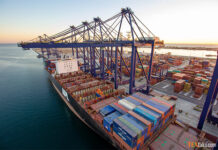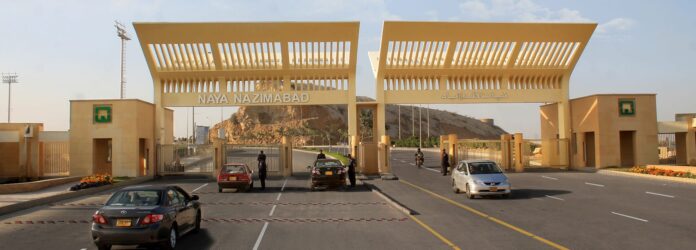Buying a house is no small matter, for any individual. One thinks about price, location, fit, distance from work, needs of the family – the list goes on. But one thing that needs to be paramount in all this is that the house – the physical building itself – has some value, some longevity. That it is not going to collapse or flood or a myriad other worst case scenarios.
Unfortunately, in the country’s largest city, these are legitimate questions to worry about. And nothing kills consumer confidence like a few freak accidents here or there. Such is the case of Naya Nazimabad, which was meant to be a stellar new housing project, became entangled in the horrifics monsoon rains that flooded the city in 2020. And it seems that that has had an impact on sales and so on. In the most recent annual report released to the Pakistan Stock Exchange (PSX), Javedan Corporation, the company that owns Naya Nazomabad, recorded its lowest consolidated revenue figure since 2013 – when the company formerly kickstarted – and its second lowest consolidated net income.
What happened? To understand, it helps to have context. Naya Nazimabad was meant to echo the original Nazimabad, a middle class suburban neighbourhood in Karachi established in 1952. As they housed mostly refugees and immigrants from India, these neighbourhoods came to embody the promise of ‘Pakistan’ – prosperity for the middle class. To this day, they command some of the highest per-square-foot prices in Pakistan real estate.
Now, Arif Habib Group, the conglomerate started in 1970, owns majority shares in Javedan Corporation, which was incorporated in 1961 and started off as a cement factory. Javedan owns around 1,300 acres of land at Manghopir, near SITE in Karachi. The area used to house Javedan’s cement plant, dilapidated by years of neglect, which in the last decade was converted in 2012 to a housing project, or Naya Nazimabad.

As a project, Naya Nazimabad was conceived to “accommodate the housing demand of the middle income group and to provide a quality lifestyle for the progressive middle class,” according to its website. The land is divided up into eight blocks (A, B, C, D, K, L, M, N), with each block designed to have its own commercial area, mosque, and park. The houses are divided up into 120, 160, 240 and 400 square yards residential plots. Once fully made, the project will have up to 30,000 homes, accommodating a population of over 100,000 people.
Initially, the company recorded a consistent loss between 2009 to 2012, the last few years it was still a cement factory, before recording a profit every year since then (after having converted to a real estate developer), hovering around the Rs800 million mark. In 2017, it recorded its highest profit, at Rs990 million. Similarly, revenue streams also looked good, in particular in 2017 and 2018, where the company brought in revenue greater than Rs2 billion.
And then, in 2019 and 2020, the slippery slope began. The company’s profit after tax more than halved, from Rs580 million in the year ending June 2019, to Rs209 million in fiscal year 2020. That is the lowest profit after tax since the company began. Most of it is due to revenue from contracts decreasing, from Rs1,899 million in 2019, to Rs 1,678 million in 2020. And things just got worse in 2021, with revenue falling to Rs1,117 million, and profit after tax standing at Rs262 million (the difference between the two profit figures for 2020 and 2021 is simply different taxation rates).
By way of explanation the company’s official standpoint was: “The financial performance for the year declined as compared to the corresponding period on account of no new developments being launched during the period. Going forward, the management expects sales and profitability to improve as many new projects are set to be launched in the market.” In addition, the company administrative expenses for the period grew by 9% to Rs420 million.

Why is revenue falling? Well it may have something to do with the negative press not just of the rains, but also the fact that there were multiple petitions to cancel Naya Nazimabad altogether. The Deputy Commissioner (DC) Manghopir District West Karachi sent two letters in December 2019 and January 2020 to Director General (DG) Sindh Building Control Authority to scrap the project entirely. Javedan then had to file a petition in the Sindh High Court in February 2020. Finally in April 2021, the DC withdrew his earlier letters. This was noted by the court in September 2021.
When not arguing for the existence of the project in the first place, the company is also trying to make sure the mistakes of 2020 do not happen again. To that end, it has emphasized the development of an external storm water drain before the monsoon season. The external drain measuring 7700 ft has been laid from Haji Fazal Town, while bund has been built between block B, C, D to control flow of stormwater. While a technical consultant has been hired, there is little else information provided. Not that is stopping the company from building more: it just received a loan of Rs1 billion at a 0% markup from HBL to create the Naya Nazimabad Hospital. But will people move there to begin with?

























